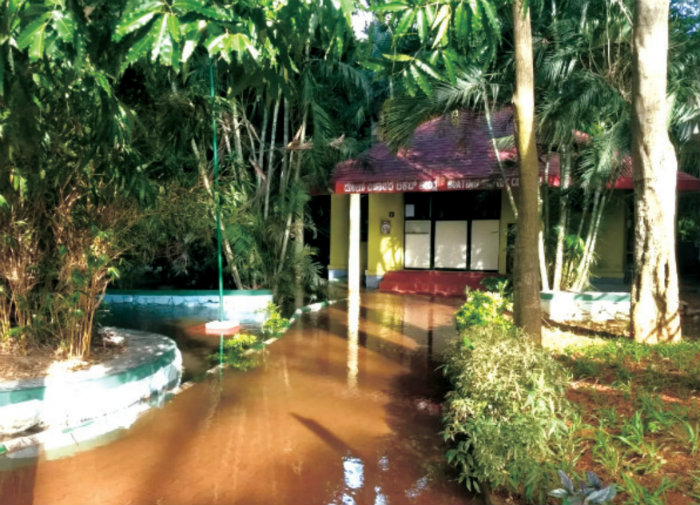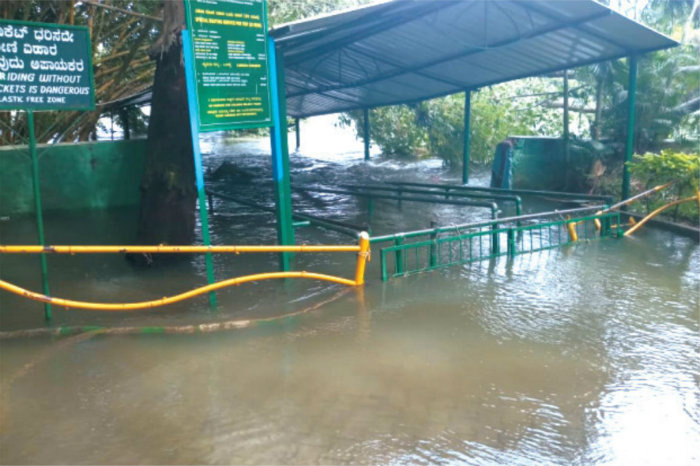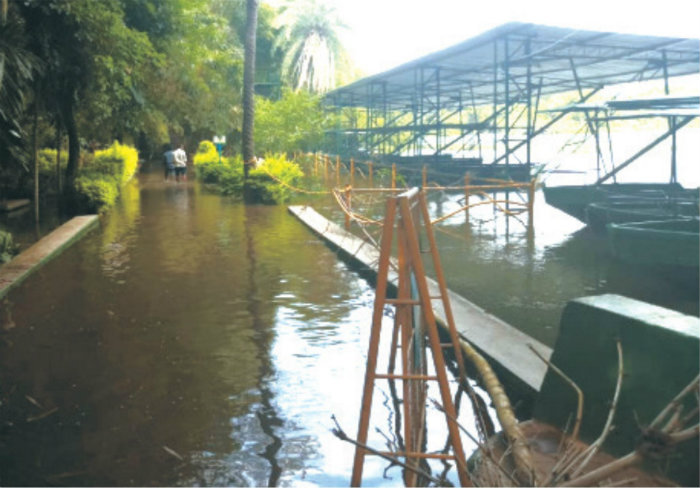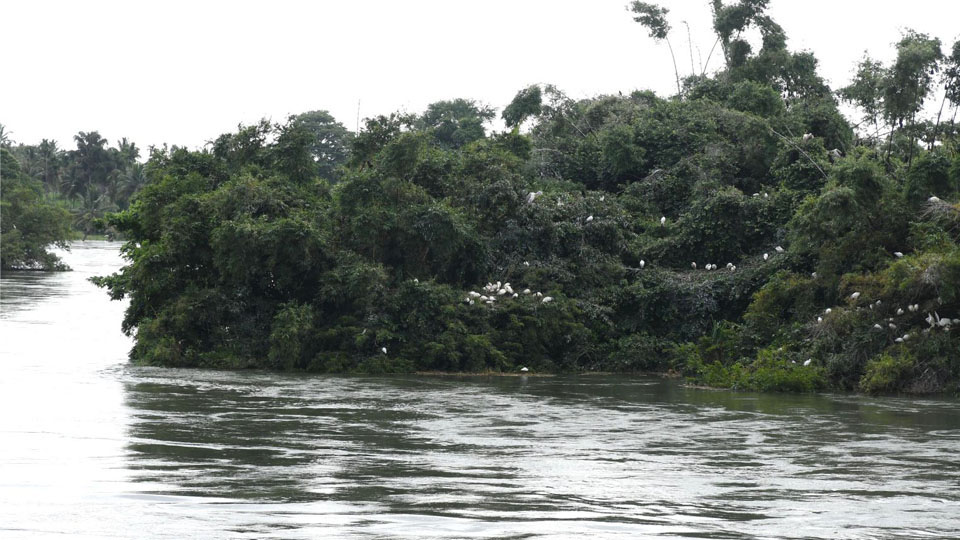Srirangapatna: Heavy rainfall and huge discharge from the Krishna Raja Sagar since a couple of days has flooded the bird sanctuary at Ranganathittu and boating has been cancelled as a precautionary measure. However, entry of visitors to the bird sanctuary has not been banned and they are allowed to go up to Dr. Salim Ali Interpretation Centre.
The staff manning the sanctuary said that the Forest Department is worried that the existing migratory birds and their nests will be washed away due to rising water level. Though there are not many nestlings, except of the local variety and there were only 30 percent of the Painted Storks left in the sanctuary, the rising waters have washed away hundreds of nests as most of the trees are half inside water, said Deputy Conservator of Forests (DCF) Mysuru Wildlife Siddaramappa Chalkapure.
While White Ibis had moved to safe places, some spoonbills, river terns, stone plovers, swifts, swallows, red wattled lapwings, open bill storks, cormorants and darter were sighted in the sanctuary apart from the cattle egrets.

He said many migratory birds had shifted their habitat because of change of season. Some local birds that roost in the sanctuary had moved to higher reaches. Marsh crocodiles are taking shelter at the riverbank in the sanctuary and were now safe in the six islands.
“We are taking all precautionary measures and we might shift some birds to a safer place. More veterinarians are being roped into service at the sanctuary. However, there is no reason to panic as migratory birds mainly visit the sanctuary during December. The sanctuary has check dams which control the pressure of water flow,” he added.

The Ranganathittu Bird Sanctuary is one of the most popular tourist spots in the State and is rated as among the best in the country. This season is also considered to be one of the best to view the birds.
The sanctuary attracts nearly 2.8 lakh tourists every year and was formed when Kanteerava Narasimharaja Wadiyar constructed an embankment across the Cauvery in 1648.

The sanctuary attracts hundreds of species of birds such as little cormorant, night heron, large cormorant, white ibis, darter, lesser whistling teal, river tern, Indian cliff swallow, spoon-billed stork, painted stork and pelican.








Recent Comments